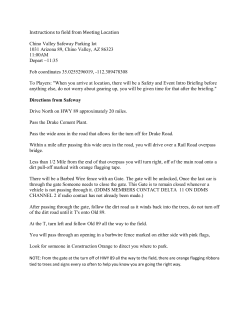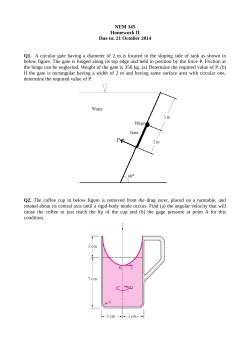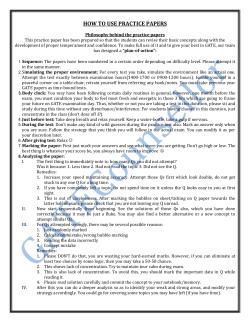
Aiger AIG Specification language
AIGER AIGER A language for describing hardware in AIGs Literals are constants or signed variables rep. by positive ints False is rep. by 0, True is rep. by 1 Variable is even number ≥ 2, negated literal is odd number Latches are assumed initialized to 0 Beginning of file is a header with format: Header 1: aag M I L O A ⇐ text Header 2: aig M I L O A ⇐ binary M: maximum variable index I: number of inputs L: number of latches O: Number of outputs A: Number of and gates AIGER All inputs are then listed, one per line, for example: aag 7 2 0 2 3 2 4 6 ... Latches are then listed, one per line. Two literals: first is even, second is output. For example: aag 7 2 0 2 3 ... 2 3 ... AIGER The output literals are listed, one per line: aag 3 2 0 1 1 ... 6 output 0 ... Then the and gates are listed, one per line. Three literals: even output, followed by two inputs A single and gate: aag 3 2 0 1 1 2 4 6 6 2 4 input 1 input 2 output 3 and gate 0 1∧2 Finally an optional symbol table may be written followed by an optional comment section AIGER Example: the empty circuit: aag 0 0 0 0 0 Example: the constant false: aag 0 0 0 1 0 0 Example: the constant true: aag 0 0 0 1 0 1 Example: a buffer: aag 1 1 0 1 0 2 2 input output AIGER Example: an inverter: aag 1 1 0 1 0 2 3 input output Example: an or gate: aag 3 2 0 1 1 header 2 input 1 4 input 2 7 output 3 6 3 5 and gate 1 ¬1 ¬(¬1 ∧ ¬2) ¬1 ∧ ¬2 Example: a toggle flip flop - one latch, two outputs: aag 1 0 1 2 0 2 3 2 3 latch showing next state literal output 1 output 2 AIGER Example: a half adder: aag 7 2 0 2 3 header 2 input 1 4 input 2 6 output 3 12 output 6 6 13 15 and gate 1 12 2 4 and gate 2 14 3 5 and gate 3 input bit input bit sum bit carry x⊕y x∧y ¬x ∧ ¬y x y
© Copyright 2025









